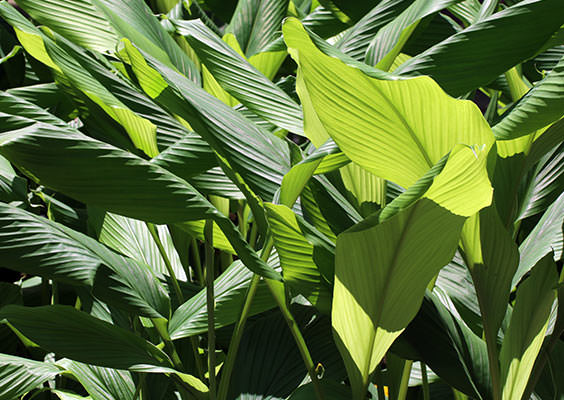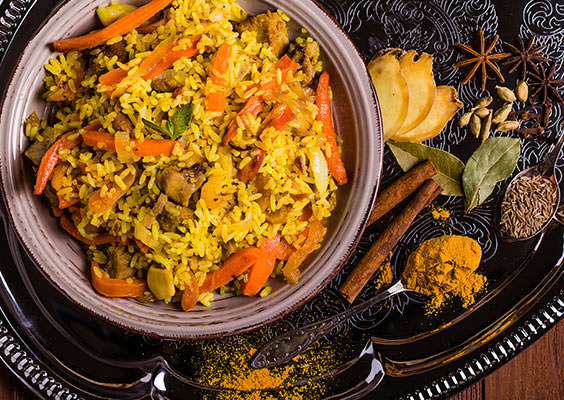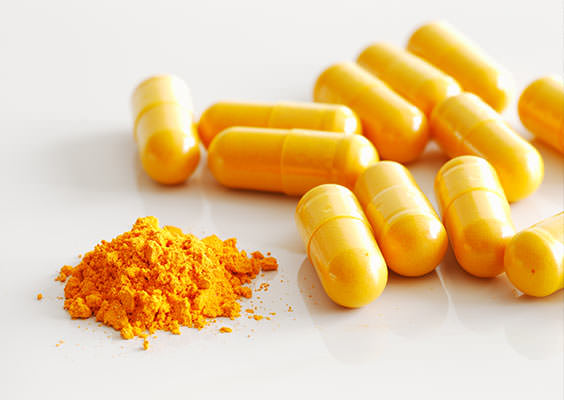I’m always happy to find things in my travels to bring back to you. Today I want to tell you about a miracle of nature called turmeric.
Turmeric has been used to treat a wide variety of conditions.
You can read about it in-depth in my latest book, Healing Herbs of Paradise.
The roots of this exotic leafy plant contain curcumin, a very powerful antioxidant that also has remarkable anti-inflammatory properties.1,2,3

What Does Curcumin Do?
Curcumin neutralizes free radicals… those nasty little chemicals that travel through your body and cause damage to healthy cells and cell membranes.
Which means curcumin effectively treats everything from rheumatoid arthritis to heart disease and even erectile dysfunction.
Now, a new clinical study published in Cancer Letters shows curcumin extract also targets cancer stem cells (CSCs), which are at the root cause of tumor formation and malignancy.4
Curcumin Benefits
It turns out that curcumin can seek out and kill cancer cells while leaving healthy cells alone. It also works with conventional chemotherapy drugs to make them more effective and — in some cases — less harmful.
If you are a frequent reader of mine, you probably already know that curcumin helps improve blood flow to your whole body.
That’s important because poor blood flow can lead to high blood pressure, poor sexual performance, even Alzheimer’s disease. Decreased blood flow can also contribute to stroke, hardening of the arteries, and kidney disease.
Curcumin can also protect your entire cardiovascular system. It even improves your body’s absorption of nitric oxide, the molecule that signals your blood vessels to relax for greater blood flow.5
I became a big fan of turmeric root during my trips to Bali
, where it has been used for centuries by traditional healers to lower blood sugar for people with diabetes.6 My friend Westi grows a lot of turmeric in his tropical garden.Turmeric looks like a cross between ginger and a carrot. It has a brownish-reddish outer layer. If you peel off or cut through turmeric, you’ll see a rich orange color like a carrot or sweet potato. Your fingers turn orange immediately as soon as you touch the root.

Turmeric in the Kitchen
One of the best ways to experience the healthful benefits of turmeric is to cook with it.

- I mix up different combinations of turmeric, ginger, cinnamon, paprika, cumin and garlic and use it as a dry rub for lamb and chicken. I cut up turmeric root and put it in stir-fry dishes and stews. I also put ground curcumin in soups and cooked vegetables.
- You can also throw a teaspoon of turmeric into your pan when you’re sautéing vegetables to give them a little kick.
- An easy way to get it is to visit an Indian specialty shop. I like to drop in my favorite store and pick up fresh turmeric root and curcumin. You can buy turmeric in conventional ground form, or whole. But if you’re going to buy it ground, make sure it’s all curcumin and not just some of the root ground up with curry.
Turmeric as a Supplement

- Pure curcumin is also available in a supplement. However, most are low quality and either aren’t absorbed very well or pass through your system too quickly. So to get more bang for your buck, get a curcumin supplement that contains piperine, a black pepper extract that increases its absorbency.
- Curcumin is the main beneficial component of turmeric root, so look for at least 90% or greater curcuminoids.
- Optimal doses have not yet been established for cancer treatment. Clinical trials have used up to 8,000 mg per day.7 For osteoarthritis and rheumatoid arthritis prevention and treatment, I recommend 400 – 500 mg twice a day.
- For better absorption, take it before meals or at least three hours after you have eaten. However, avoid taking it before bedtime, as it could disturb your sleep.
To Your Good Health,
![]()
Al Sears, MD, CNS
1. Taty Anna K1, Elvy Suhana MR, Das S, Faizah O, Hamzaini AH. Anti-inflammatory effect of Curcuma longa (turmeric) on collagen-induced arthritis: an anatomico-radiological study. Clin Ter. 2011;162(3):201-7.
2. Chainani-Wu N1. Safety and anti-inflammatory activity of curcumin: a component of turmeric (Curcuma longa). J Altern Complement Med. 2003 Feb;9(1):161-8.
3. Bharat B. Aggarwal1 and Kuzhuvelil B. Harikumar. Potential Therapeutic Effects of Curcumin, the Anti- inflammatory Agent, Against Neurodegenerative, Cardiovascular, Pulmonary, Metabolic, Autoimmune and Neoplastic Diseases. Int J Biochem Cell Biol. 2009; 41(1): 40–59.
4. Li Y, Zhang T. Targeting Cancer Stem Cells by Curcumin and Clinical Applications. Cancer Lett. 2014 Jan 23. Epub 2014 Jan 23. PMID: 24463298
5. Boonla O, et. al. “Curcumin improves endothelial dysfunction and vascular remodeling in 2K-1C hypertensive rats by raising nitric oxide availability and reducing oxidative stress.” Nitric Oxide. 2014;pii: S1089-8603(14)00294-8.
6. Meng B, Li J, Cao H. “Antioxidant and anti-inflammatory activities of curcumin on diabetes mellitus and its complications.” Curr Pharm Des. 2013;19(11):2101-13.
7. Johnson JJ, Mukhtar H. Curcumin for chemoprevention of colon cancer. Cancer Lett. 2007 Oct 8; 255(2): 170-81. Epub 2007 Apr 19.
